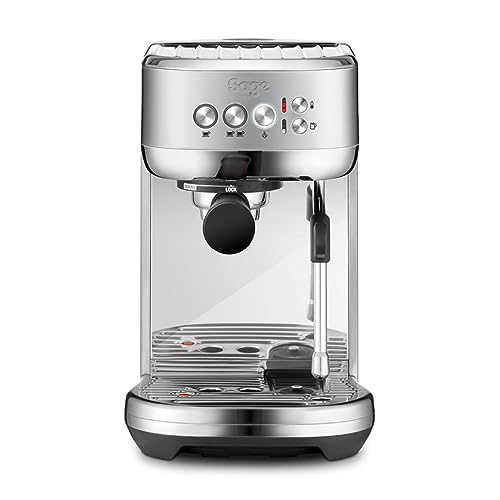How to Make Espresso Machine Coffee
Espresso machines can produce an amazing cup of coffee, however they require more maintenance and setup than a regular coffee maker. You must also grind and tamp the beans yourself.
The most important ingredient in making espresso is pressure. The way espresso machines work is that a heating vessel heats the water to the ideal temperature, then forces it out of the spouts and into the grounds.
Temperature
Espresso is made when hot water is forced through finely ground coffee. The temperature of the water is crucial to the quality of the final shot. Low temperatures can cause lack of flavor compounds. High temperatures can cause over extraction, which can cause a bitter or burnt taste.
The ideal temperature for espresso is between 195 and 205 degrees Fahrenheit. This temperature can be achieved using a grouphead that is designed to ensure a constant temperature and stability throughout the process of brewing. The most sought-after type of group head is the E61 which offers the stability of temperature with pre-infusion and lever control.
When making adjustments to the espresso machine for different roasts and brew ratios it is crucial to take into consideration the impact of temperature on extraction yield as well as crema. The optimal temperature will be contingent on the specific roast and bean however, the general rule is that lighter roasts and higher ratios of brew require higher temperatures than dark roasts and lower brew ratios. A high-quality thermocouple is essential for maintaining the same temperature.
Pressure
During the process of brewing espresso machine coffee is pushed through finely ground coffee grounds that have been removed. This causes chemical reactions to draw out flavors, oils and other soluble ingredients. The resultant beverage is usually richer and more flavorful.
The ideal espresso machine pressure should be nine bar, which is equivalent to the atmospheric pressure at sea level. The soluble compounds present in the espresso bean are most effectively extracted at this pressure.
However certain espresso machines advertise 15 or even 20 bars of pressure. They may be able to attain these pressure levels but they may not sustain them throughout the extraction.
To put that into discount espresso machines To put it in perspective, one bar of pressure is equivalent to the 32 pounds per square inch, or PSI, of the tire of a car. It's four times the pressure that a professional cyclist utilizes to fill their bike tires. Any serious home barista has to be able to control the pressure of their espresso machine, and also produce consistent espressos.
Water

The water you use to make espresso is one of the most important elements of a great cup coffee. The correct water will help your beans extract their full potential, while the wrong type of water can cause problems like clogged pipes or even damage to your expensive espresso machine.
To get the most espresso extraction make sure you choose an organic spring with a high mineral content. This water will enhance the taste of your espresso without chalky mineral trace that is found in tap water or bottled water. This is an excellent alternative to distillation or reverse osmosis water, which can be too pure and cause flavor issues.
But, you shouldn't use an water filter that removes too many minerals from the tap water, as this can also cause problems with flavor and extraction. Purchase a water testing kit to determine the average hardness of your water at the local level. This information can be used to find the correct filtration system to your espresso machine.
Beans
The majority of coffee enthusiasts tend to be involved in the process of making espresso. They ponder a myriad of variables, including temperature, water pressure beans, milk viscosity and other aspects. If one factor is slightly off, the whole shot may taste bad.
The beans used are the most important aspect when it comes down to espresso. Many people believe that only certain varieties are suitable for espresso. While some beans are appropriate for certain purposes, any roasted coffee bean can be used to make espresso. The difference between espresso beans and regular coffee beans is that espresso beans are roasted for longer and tipycally over the second crack, which gives them more of a dark appearance and makes them more soluble in water.
The best espresso beans tend to be medium or dark roasted. This gives the shots their characteristic richness and boldness. Lightly roasted beans can be used to create great espresso, especially when they're pre-ground to make it easier to use an espresso maker.
Milk
Espresso and milk are a classic pairing. The coffee doesn't just boost energy levels, but the steamed milk helps balance the bitterness of espresso and also adds a wonderful creamy flavor. There aren't many culinary pairings more perfect than this one!
When selecting an espresso machine capable of making latte or a cappuccino as well, you should consider the ease to use. Many of the best machines come with a jug of hot or cold coffee and steam wand. They also come with an espresso portafilter that can be used to make the shot. Certain models also come with an integrated grinder, tamper and frother.
The steam wand needs to be cleaned prior to using it for the first time throughout the day (or after each cup of espresso) to eliminate any condensed water. This process is only 30 seconds, but it is essential to keep your machine running smoothly. If you don't cleanse this process, it could lead to bitter taste or a buildup of bacteria, which could alter the taste or smell of your beverage. It's simple to do and should be part of your routine maintenance schedule.
